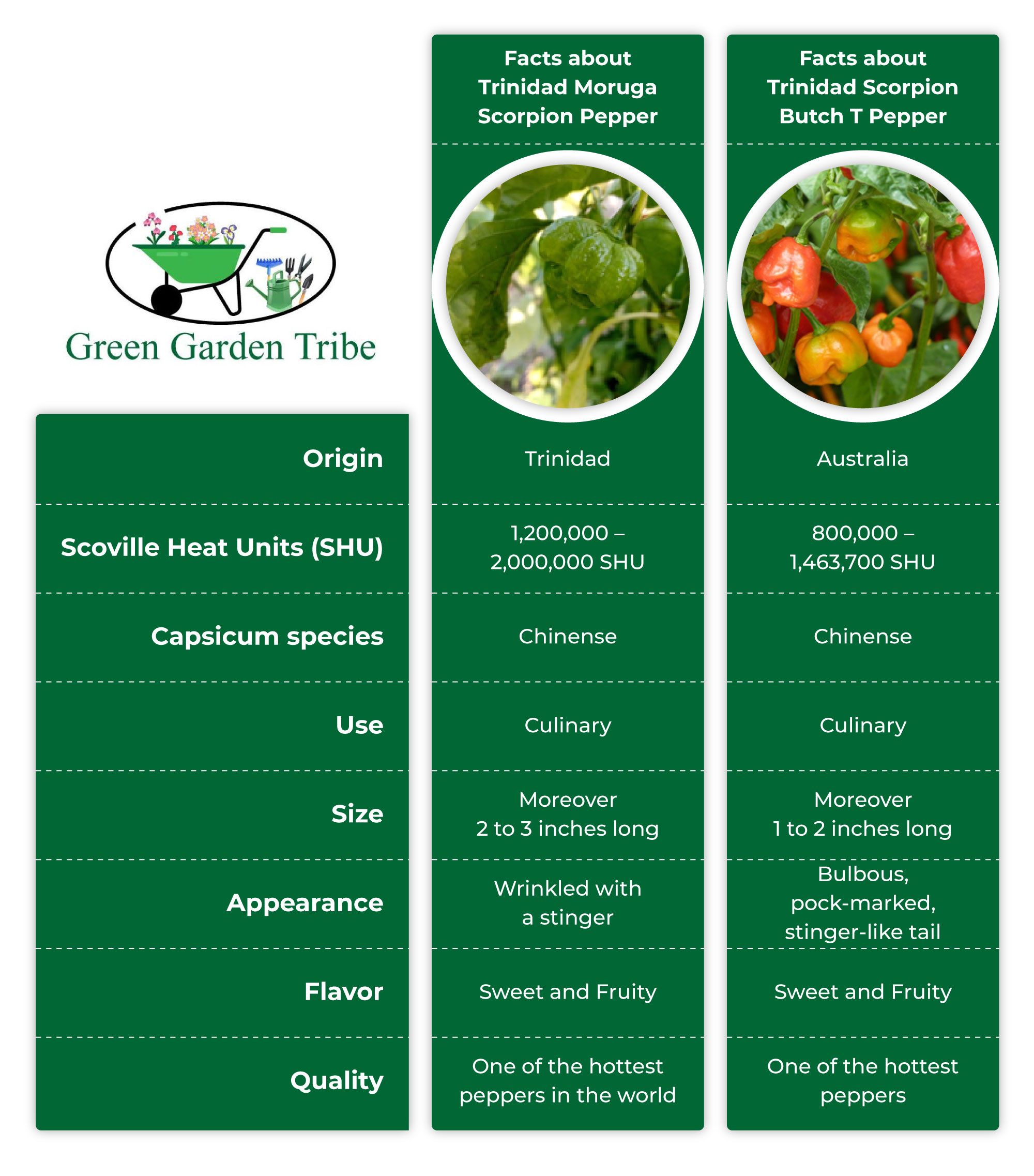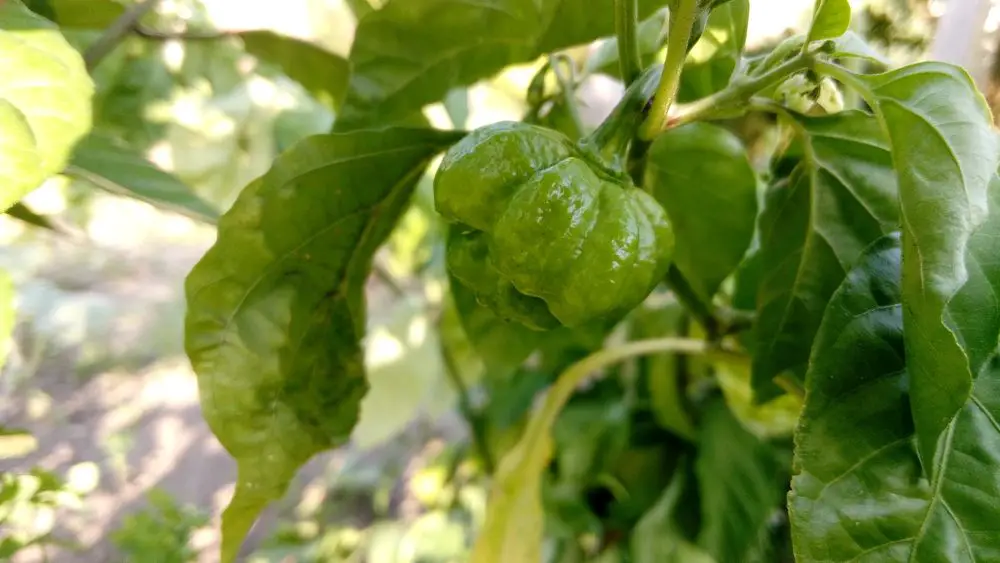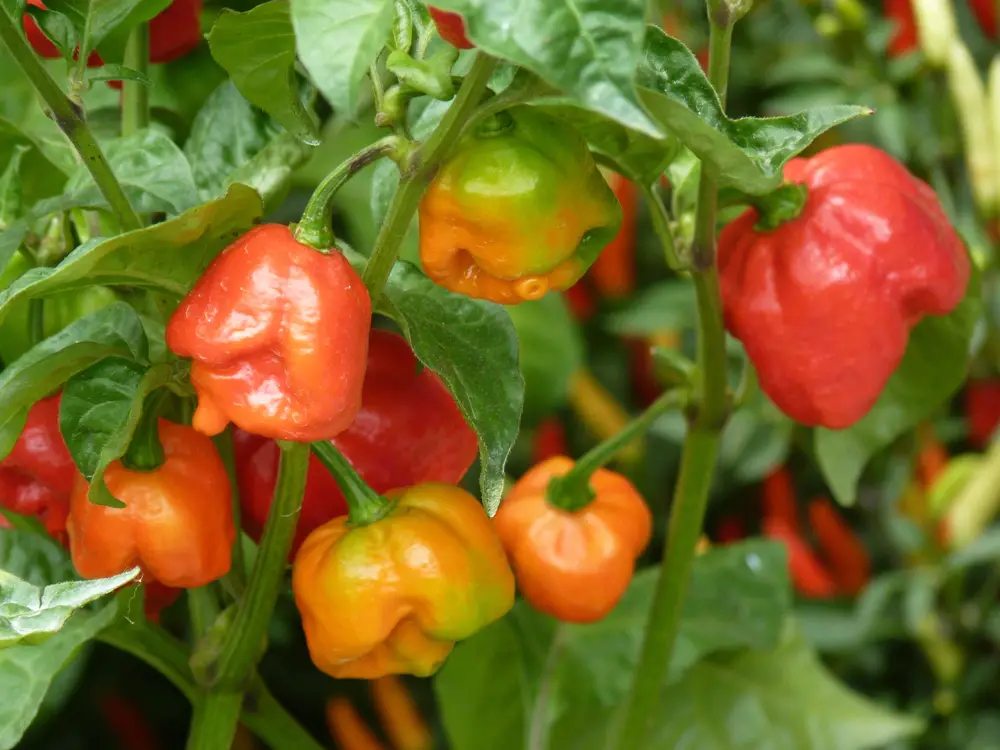If you want a food that is so hot it makes your eyes water, ears sweat, and almost sets your tongue on fire, the Scorpion pepper is perfect for you!
The Trinidad Moruga and Trinidad Butch T Scorpion peppers are among the hottest peppers in the world. They can do physical damage to you if eaten raw yet when cooked they only hurt badly for a while and there are claims that they can improve your health.
What is a Scorpion Pepper?
The fruit from this Scorpion Pepper plant has 1.2 million SHU. Sackville Heat Units (SHU) means the amount of Capsaicin present. Try to imagine how much more interesting is this super-hot pepper which is more than 230 times hotter than a Jalapeno.
Scorpion pepper begins in Tobago and Trinidad in the district of Moruga and is often called the Moruga Scorpion.
The kind of species is Capsicum Chinense. This pepper plant thrives in hot weather and the heat amps up when the plant is stressed by drought and hot temperatures.
Scorpion Peppers are named as such because the pointed end of the pepper is said to resemble a scorpion’s stinger.
Some Scorpion Pepper growers insist on giving the plants worm castings, believing the levels of heat will intensify. It seems there’s quite a competition to breed hotter and hotter peppers.
This competitive notion most likely was the beginning history of the Scorpion pepper. It was deemed the hottest pepper by the Chile Pepper Institute and this fact was disputed by the Guinness World Records folks.
This Scorpion pepper is deeply red, wrinkled little lantern-like fruits, although there is a brown Scorpion with chocolate-purple skin. Scorpion peppers don’t seem too bad at their first bite, but the heat builds exponentially the longer it is on the palate.
The sweet-hot flavor of Scorpion Peppers is so popular in many Western Indies dishes that work well with them. The Capsaicin would release as they are cooked or masticated, this component in peppers provides the heat.
Never work with these peppers without wearing plastic gloves and throw away the gloves when your work is done. These peppers are quite deadly when raw and can burn your skin.
Be aware while working with peppers because the capsaicin level is so high. It could actually burn your skin and may affect the mucous membranes.
Two Types of Scorpion Peppers

1. Trinidad Moruga Scorpion Pepper

This is the former hottest chili pepper cultivar and one of the hottest peppers in the world. This Scorpion Pepper has a tender and a very desirable fruity flavor aside from the heat.
This kind of Scorpion Pepper is native to the village of Moruga, Trinidad, and Tobago. It is said to be one of the spiciest peppers in the world.
In the year 2012, New Mexico University’s Chile Pepper Institute identified the Trinidad Moruga Scorpion Pepper as the hottest pepper chili at that time, with the heat of 1.2 million Scoville Heat Units (SHU).
Meanwhile in 2017 according to Guinness World Records, the hottest pepper was the Carolina Reaper, with 1.6 million SHU.
It is said of this chili pepper that the first bite doesn’t seem so bad but them it builds and building on itself until you cannot bear it.
Trinidad Moruga Scorpion Pepper can be grown from seeds in most parts of the world. Somewhere in North America, the growing season varies regionally from the last spring hard frost to the first fall hard frost. They are perennials that grow all year.
Facts about Trinidad Moruga Scorpion Pepper:
Origin: Trinidad
Scoville Heat Units (SHU): 1,200,000 – 2,000,000 SHU
Capsicum species: Chinense
Use: Culinary
Size: Moreover to 2 to 3 inches long
Appearance: Wrinkled with a stinger
Flavor: Sweet and Fruity
Quality: One of the hottest peppers in the world.
Trinidad Moruga Scorpion Pepper – What is the heat like?
Like other hot peppers, Trinidad Moruga Scorpion Pepper, the heat of eating the pepper raw is not something that hits you right away. It takes quite a while to build and build. Then it starts. It is like a fire building from inside your body, and you most likely will experience hiccups, sweating, numbness, and even more.
2. Trinidad Scorpion Butch T Pepper
This Trinidad Scorpion Butch T Pepper is not to be taken lightly, although it ranks lower on the Top Ten List. However, it once held the official title of The World’s Hottest Pepper from March 3, 2011, until August 7, 2013.
This powerful Scorpion Pepper was discovered by Butch Taylor in his patch of Trinidad Scorpion Peppers.
It looked different from the other peppers that were grown and so he decided to taste it, thus he knew this kind of pepper had something special. Its unique shape is different from the rest of the peppers with its pointy tail.
After a few generations of isolation, he submitted it to Guinness World Records and the story began.
The heat of Trinidad Scorpion Butch T can be described as swallowing burning coal that keeps getting hotter and hotter.
It is the unrelenting heat that makes this pepper so scorching hot. What’s really great about growing this 3 feet tall pepper is that it produces bountiful crops or fruits.
Facts about Trinidad Scorpion Butch T Pepper:
Origin: Australia
Scoville Heat Units (SHU): 800,000 – 1,463,700 SHU
Capsicum species: Chinense
Use: Culinary
Size: Moreover 1 to 2 inches’ long
Appearance: Bulbous, pock-marked, stinger-like tail
Flavor: Sweet and Fruity
Quality: One of the hottest peppers.
Trinidad Scorpion Butch T Pepper – What is the heat like?
There is a sweetness in this super-hot pepper. You can taste a fruity undertone before the heat really hits.
A Scorpion pepper heat tends to come on faster than that of some other super-hots. So, the fruitiness is short-lived.
The real predominant flavor will come out once the spiciness hits.
Indeed, Scorpion Peppers are extremely hot and many people just can’t handle the heat.
Why Do People Try To Eat Them?
Perhaps it is the health benefits you can get from the Scorpion Pepper. Actually, there are several benefits to capsaicin. Capsaicin is the ingredient in Scorpion Peppers that makes them hot.
Well-Documented Benefits Derived From Scorpion Peppers:
It is a top-notch pain relief treatment. The endorphins that are released from eating or using capsaicin as a natural way to heighten your imunity to pain. Thus pain seems to just go away.
It is really great for natural pain management.
It is a great metabolism booster. It kicks your metabolism up a notch. It is like caffeine in terms of increasing alertness.
It is an effective arthritis treatment. It works for general pain and is one of the best natural remedies for arthritis.
It is an effective appetite suppressor. If you are looking to lose a few pounds in a healthy way, eating foods high in capsaicin may work well.
There are further studies showing that capsaicin may kill prostate cancer cells. This is for preventive care.
However, ongoing trials show that people taking capsaicin have a lower chance of ever getting prostate cancer.
According to healthcare experts, capsaicin has proven effective for curing heartburn and helping to clear ear infections.
Best of all, there are no known side effects for taking capsaicin and eating Scorpion Peppers. Yet, it is still a smart move to first discuss it with your doctor.
Final Thoughts on The Scorpion Pepper
Scorpion peppers typically were developed in a hot Caribbean climate. Hence, they do best in mildly warm to hot temperatures, ideally around 80 degrees.
In general, the hotter the weather the hotter will be your Scorpion Peppers.
However, there is such a thing as too much heat under the sun so, keep a close eye on your Scorpion Pepper plants. Provide all the nutrients they need and, stay on top of pest control.
Hopefully, this article helps you a lot. Happy Gardening!
Jenny Marie
Tribal Writer
Edited By
Patricia Godwin

